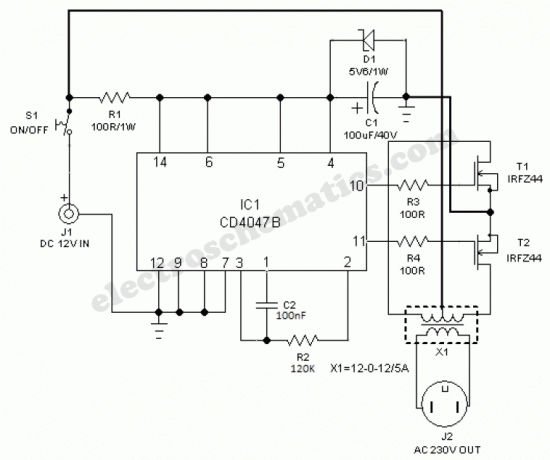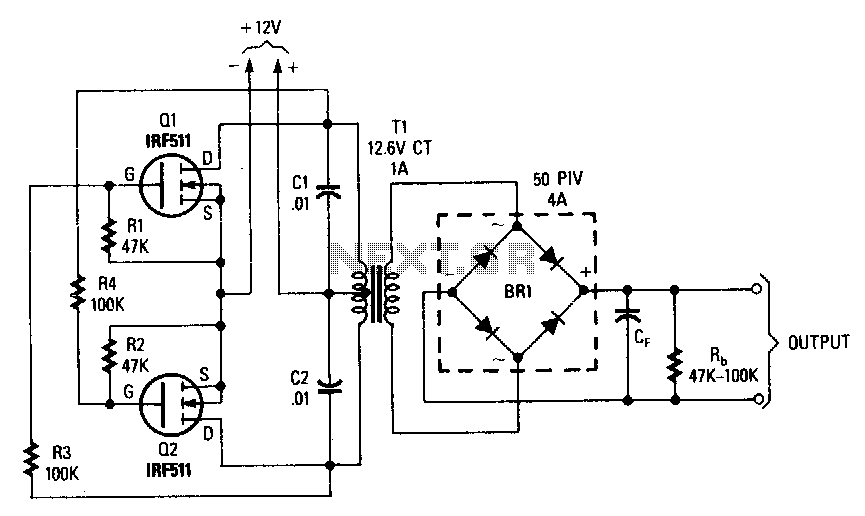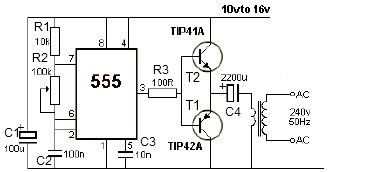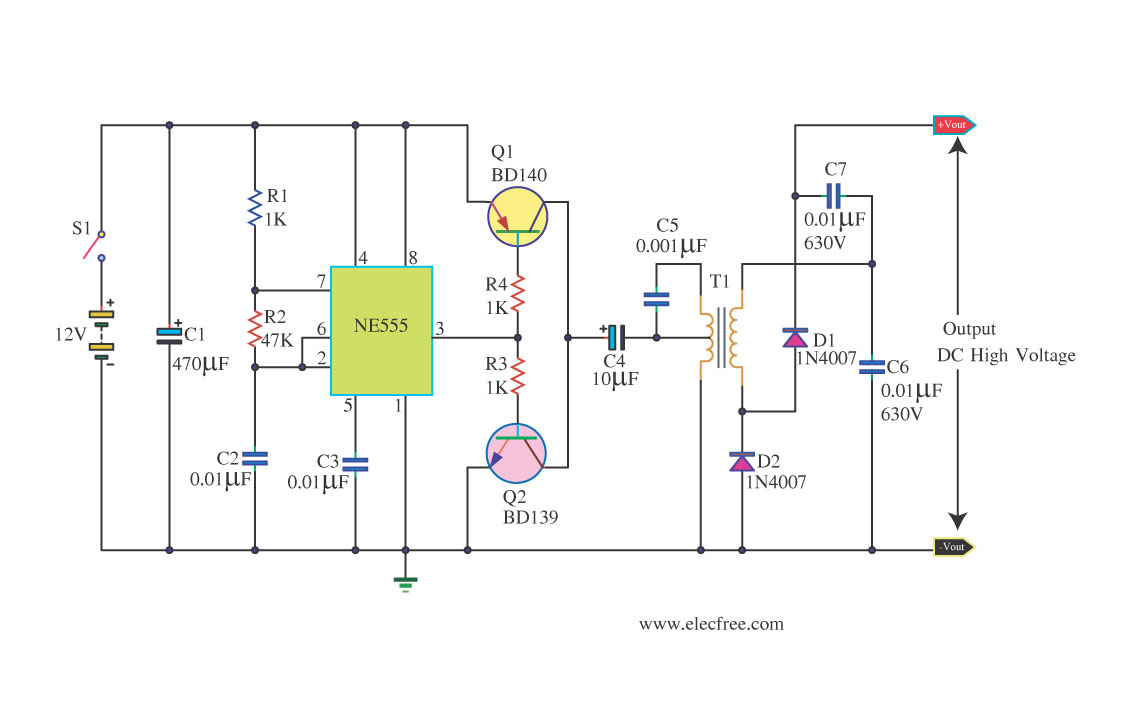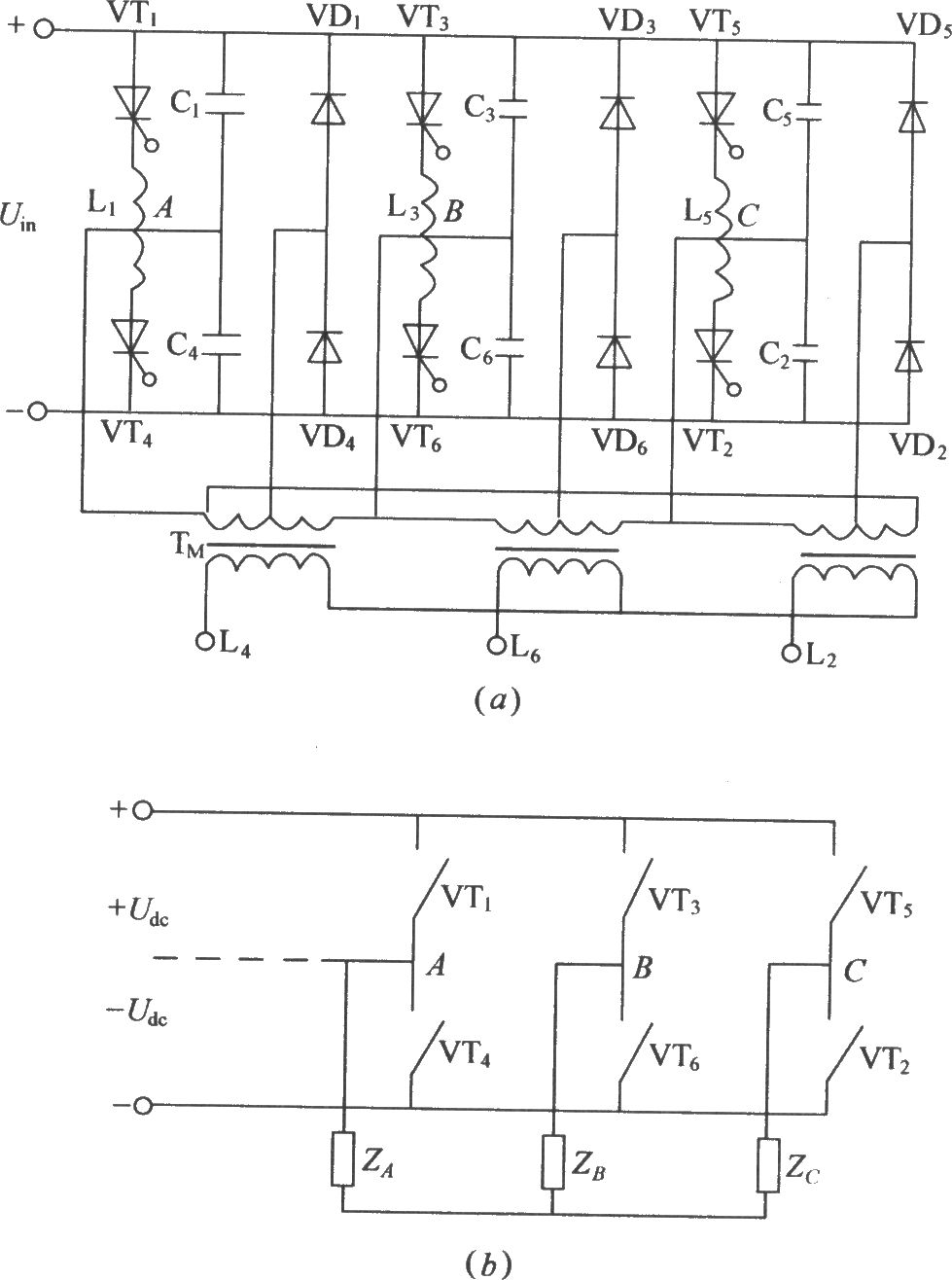
inverter
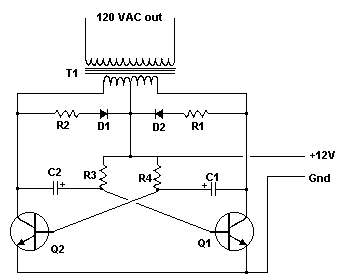
This inverter is designed to power appliances such as televisions and stereos while traveling or camping. It converts 12 VDC (volts direct current) to 120 VAC (volts alternating current).
This inverter functions by utilizing a series of electronic components to transform the low-voltage direct current from a battery or other DC source into a higher voltage alternating current suitable for standard household appliances. The inverter typically consists of a DC-AC conversion circuit, which may include transistors or MOSFETs for switching, a transformer for voltage step-up, and additional filtering components to ensure the output waveform closely resembles a pure sine wave or modified sine wave, depending on the design.
The input stage of the inverter receives the 12 VDC supply, which is often sourced from a vehicle battery or a portable battery pack. The DC-AC conversion circuit then rapidly switches the DC input, creating a pulsed output that is subsequently fed into a transformer. The transformer steps up the voltage to the desired 120 VAC level.
Output filtering is crucial in this design to minimize voltage spikes and harmonics that can potentially damage connected devices. Capacitors and inductors are commonly used to smooth the output waveform, ensuring compatibility with sensitive electronics.
In addition to the basic functionality, many inverters include safety features such as overload protection, short circuit protection, and thermal shutdown mechanisms to prevent damage during adverse operating conditions. Some models may also offer features like USB charging ports, built-in fans for cooling, and LED indicators for power status.
Overall, this inverter provides a practical solution for powering everyday appliances in off-grid situations, making it an essential component for camping, road trips, or other outdoor activities where conventional power sources are unavailable.Have you ever wanted to run a TV, stereo or other appliance while on the road or camping? Well, this inverter should solve that problem. It takes 12 VDC and steps it up to 120 VAC.. 🔗 External reference
This inverter functions by utilizing a series of electronic components to transform the low-voltage direct current from a battery or other DC source into a higher voltage alternating current suitable for standard household appliances. The inverter typically consists of a DC-AC conversion circuit, which may include transistors or MOSFETs for switching, a transformer for voltage step-up, and additional filtering components to ensure the output waveform closely resembles a pure sine wave or modified sine wave, depending on the design.
The input stage of the inverter receives the 12 VDC supply, which is often sourced from a vehicle battery or a portable battery pack. The DC-AC conversion circuit then rapidly switches the DC input, creating a pulsed output that is subsequently fed into a transformer. The transformer steps up the voltage to the desired 120 VAC level.
Output filtering is crucial in this design to minimize voltage spikes and harmonics that can potentially damage connected devices. Capacitors and inductors are commonly used to smooth the output waveform, ensuring compatibility with sensitive electronics.
In addition to the basic functionality, many inverters include safety features such as overload protection, short circuit protection, and thermal shutdown mechanisms to prevent damage during adverse operating conditions. Some models may also offer features like USB charging ports, built-in fans for cooling, and LED indicators for power status.
Overall, this inverter provides a practical solution for powering everyday appliances in off-grid situations, making it an essential component for camping, road trips, or other outdoor activities where conventional power sources are unavailable.Have you ever wanted to run a TV, stereo or other appliance while on the road or camping? Well, this inverter should solve that problem. It takes 12 VDC and steps it up to 120 VAC.. 🔗 External reference

